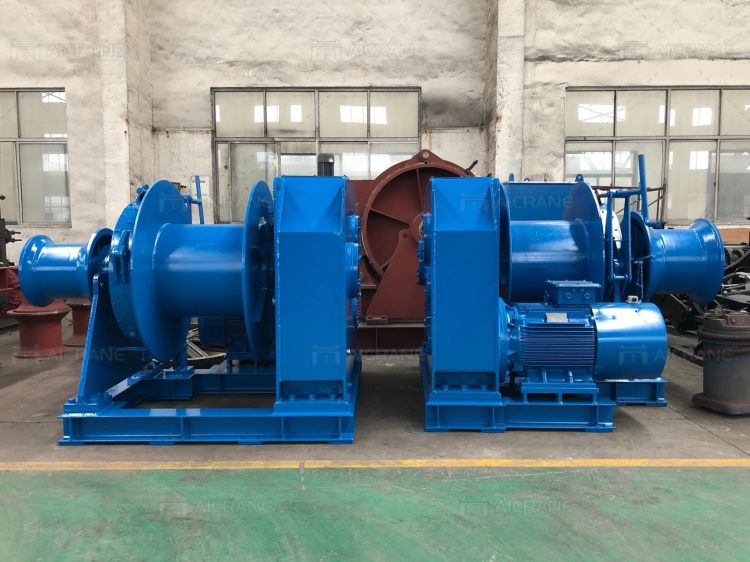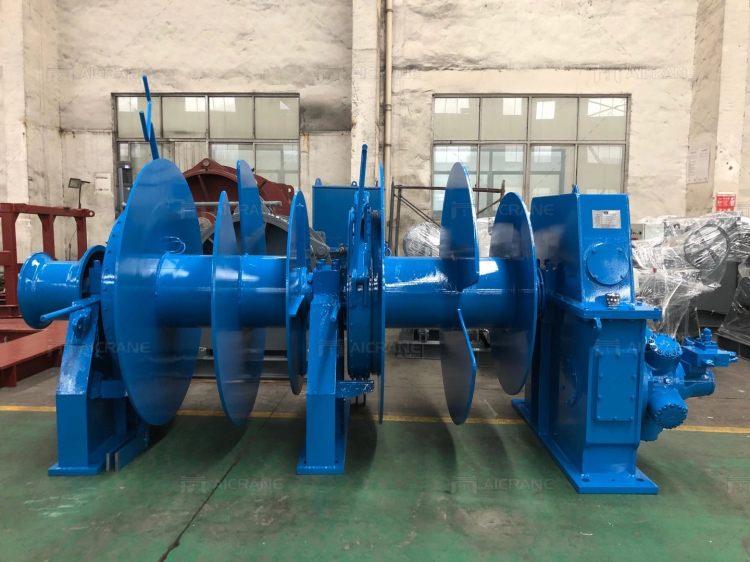Mooring plays a crucial role in ensuring the safe docking and stability of vessels, be it ships, barges, or offshore platforms. Among the various equipment used in mooring operations, the mooring winch stands as a vital component. This article explores the significance of mooring winches, their types, working principles, and the key factors to consider when selecting and operating these essential devices.
A mooring winch is a mechanical device specifically designed for handling ropes, cables, or chains used in securing vessels to docks or offshore structures. It provides controlled tensioning, slackening, and storage of mooring lines, thereby facilitating safe and efficient mooring operations.

Types of Mooring Winches
Single Drum Winches:
These winches feature a single drum to store and handle the mooring lines. They are commonly used in smaller vessels and harbor operations where the mooring load is relatively light.
Double Drum Winches:
These winches have two drums, allowing for simultaneous handling of multiple mooring lines. They offer enhanced flexibility and control during mooring and are commonly used in larger vessels and offshore applications.
Traction Winches:
Traction winches utilize a traction wheel or drum to secure the mooring lines, providing higher line-pull capabilities. They are commonly employed in offshore drilling rigs and platforms, where heavy loads and dynamic conditions require robust mooring systems.

Working Principles of Mooring Winches
Mooring winches typically operate using hydraulic, electric, or diesel power systems. A winch system consists of the following key components:
a) Drum: The drum is the central component of the winch where the mooring lines are wound and stored. It provides controlled winding and unwinding of the lines.
b) Brakes: Winches are equipped with brakes to control the tension and release of mooring lines. These brakes ensure the vessel’s stability during mooring and prevent unintended line slippage.
c) Power System: The power system drives the winch operation. Hydraulic systems offer high power and precise control, electric systems provide versatility and ease of operation, while diesel systems offer mobility and self-sufficiency in remote locations.
Key Factors in Mooring Winch Selection and Operation
a) Load Capacity: The winch should have an adequate load capacity to handle the maximum anticipated mooring load, considering factors such as vessel size, windage, and tidal conditions.
b) Line Speed and Line Pull: The winch’s line speed and line pull capabilities should match the operational requirements, ensuring efficient mooring and release of the lines.
c) Control System: An intuitive and reliable control system is essential for precise line handling, ensuring the safe and smooth operation of the winch.
d) Safety Features: The winch should be equipped with safety features such as overload protection, emergency stop buttons, and fail-safe mechanisms to prevent accidents and protect personnel and equipment.
e) Maintenance and Reliability: Regular maintenance and inspections are crucial for optimal winch performance and extended service life. Adequate training should be provided to operators and maintenance personnel to ensure proper operation and troubleshooting.
Mooring winches play a vital role in ensuring the safety and efficiency of vessel mooring operations. Whether for commercial vessels, offshore platforms, or port facilities, selecting the appropriate marine winch for mooring and understanding its working principles are essential. By considering factors like load capacity, line speed, control systems, and safety features, operators can enhance their mooring operations and minimize risks. Regular maintenance and proper training further contribute to the reliable performance and longevity of mooring winches, ensuring the smooth and secure docking of vessels in various marine environments.
